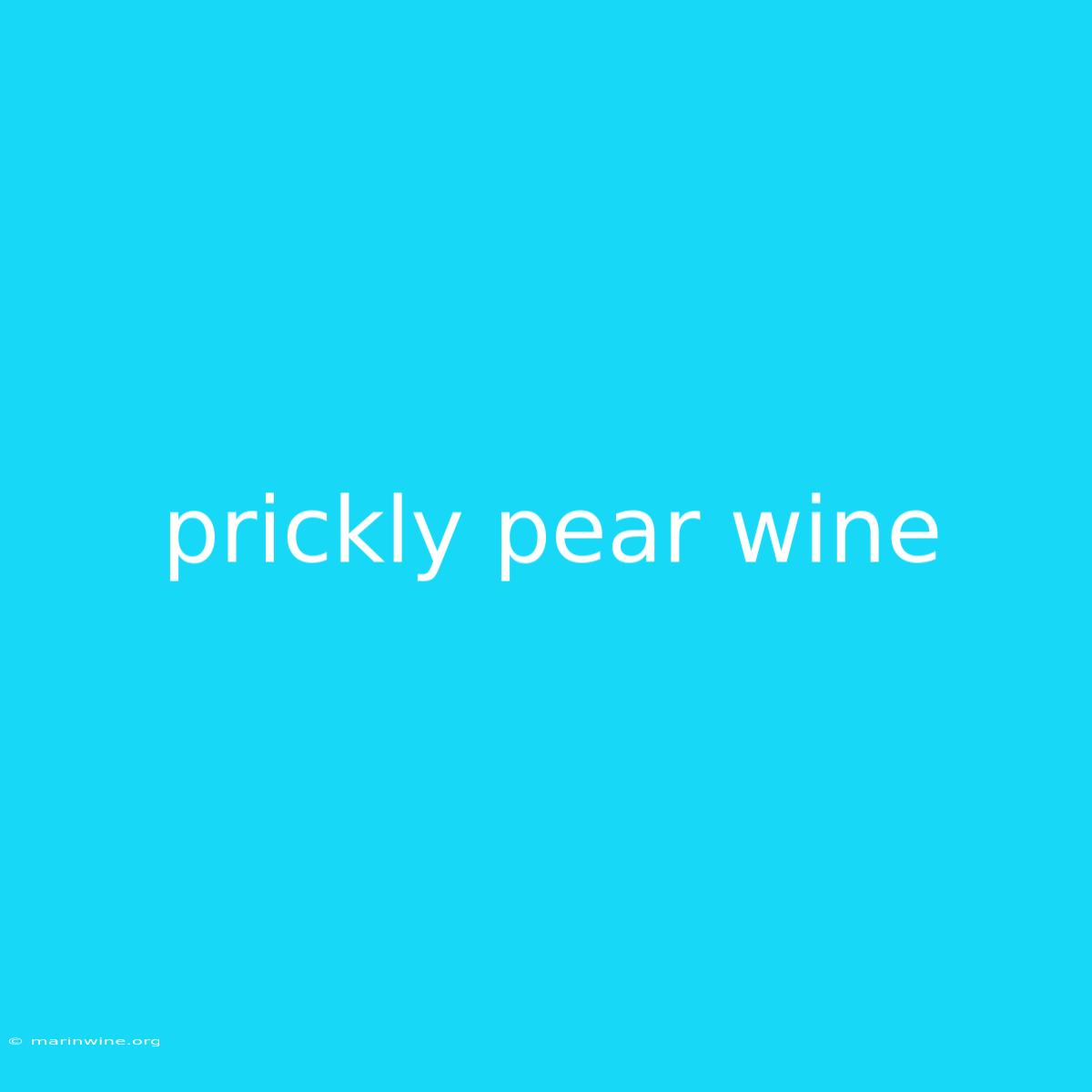Prickly Pear Wine: A Sweet and Spiky Delight
Have you ever wondered about the unique flavor of prickly pear wine? This intriguing beverage, with its vibrant hue and unexpected tang, has captured the imagination of wine lovers worldwide.
Why It Matters:
Prickly pear wine is more than just a novelty drink. It's a testament to the versatility of the prickly pear cactus, a resilient plant that thrives in arid climates. This article delves into the world of prickly pear wine, exploring its production process, flavor profile, and why it's gaining popularity.
Key Takeaways:
| Key Takeaway | Description |
|---|---|
| Unique Flavor Profile | Sweetness balanced by tartness with floral and fruity notes. |
| Versatile Wine | Enjoyable on its own or paired with various dishes. |
| Growing Popularity | Demand for prickly pear wine is increasing globally. |
Prickly Pear Wine: A Unique Blend of Tradition and Innovation
Prickly pear wine, also known as "tuna wine," has a rich history, particularly in Mexico and the Mediterranean regions. This wine is made from the fruit of the prickly pear cactus, which is also known as "tuna" or "nopal." The fruit is harvested, peeled, and then fermented to produce a unique and flavorful wine.
The Production Process:
Prickly pear wine production involves a few key steps:
- Harvesting: Prickly pears are harvested when they are ripe and full of juice.
- Preparation: The fruit is carefully peeled and washed to remove the spines and any remaining debris.
- Fermentation: The prepared fruit is crushed and fermented with yeast. The fermentation process takes several weeks.
- Aging: After fermentation, the wine is aged in tanks or barrels for a period of time. This process helps the flavors to mellow and develop.
- Bottling: Finally, the wine is bottled and labeled for sale.
Flavor Profile:
Prickly pear wine offers a complex flavor profile that appeals to many palates. The wine typically has a sweet and tart flavor with notes of floral, fruity, and even a touch of spicy.
Beyond the Wine:
The prickly pear cactus is a versatile plant with numerous benefits. The fruit, leaves, and even the stems are used in various culinary and medicinal applications.
Prickly Pear Wine and Food Pairings:
Prickly pear wine complements a wide range of foods, including:
- Spicy dishes: The wine's tartness balances the heat of spicy foods.
- Seafood: The fruit's sweetness pairs well with the delicate flavors of seafood.
- Salads: Prickly pear wine adds a unique twist to salads, especially those featuring fruits and vegetables.
The Rise of Prickly Pear Wine:
Prickly pear wine is experiencing a resurgence in popularity globally, particularly in the United States and Europe. Consumers are drawn to its distinctive flavor, vibrant color, and association with healthy living.
The Future of Prickly Pear Wine:
As interest in this unique wine continues to grow, we can expect to see even more innovative and flavorful prickly pear wines in the future. Winemakers are experimenting with different techniques and blending methods to create new and exciting expressions of this fruit.
FAQ
Q: How long does prickly pear wine last?
A: Prickly pear wine can last for several years if stored properly.
Q: What does prickly pear wine taste like?
A: Prickly pear wine has a sweet and tart flavor with floral and fruity notes.
Q: Is prickly pear wine good for you?
A: Prickly pear wine is considered a healthy beverage as prickly pears are a good source of antioxidants and vitamins.
Q: Where can I buy prickly pear wine?
A: Prickly pear wine is available online and at specialty wine shops.
Tips for Enjoying Prickly Pear Wine:
- Chill the wine before serving: Prickly pear wine is best served chilled, allowing the flavors to fully develop.
- Pair it with the right food: Consider the wine's sweet and tart profile when selecting food pairings.
- Experiment with different brands: Try various prickly pear wines from different regions to discover your favorites.
Summary:
Prickly pear wine is a captivating beverage that offers a unique and flavorful experience. From its vibrant hue to its complex flavor profile, this wine continues to capture the hearts and palates of wine lovers around the world. Its rising popularity reflects a growing interest in sustainable and unique beverages, making it a wine to watch in the years to come.

